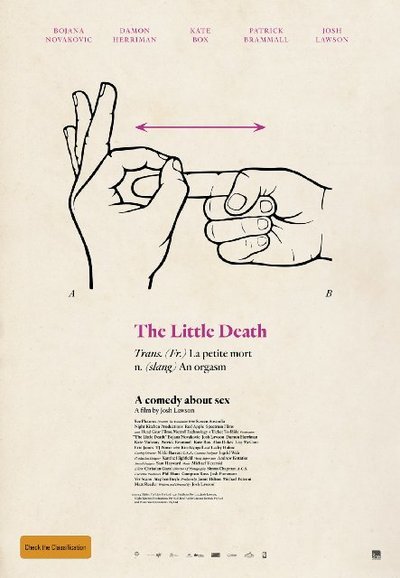Andrew Rostan was a film student before he realized that making comics was his horrible destiny, and he’s never shaken his love of cinema. Every two weeks, he’ll opine on current pictures or important movies from the past.
Amy Winehouse was not talented; “talented” was too weak a word. She was a phenomenon, one of the most exceptional vocalists of our age, and a person not even the most gifted actress could imitate. Even in the steps of removal that film necessarily creates, Winehouse, both in public and private life, had a presence that could entrance anyone and make them feel she was the only other person in the universe. Asif Kapadia all but resurrects this presence before our eyes in his indisputably essential documentary Amy.
Amy: A 21st-Century Tragedy
It is very hard to write a review of Amy because the movie is so straightforward in its presentation and so effective. Kapadia’s last film was another acclaimed biographical documentary, Senna, and he uses its technique of mixing media archives and home videos and photos from family and friends with a soundtrack of new interviews. These are not talking heads, however; Kapadia’s only newly filmed material is establishing shots of London and New York. He relies solely on the treasure trove of Winehouse footage for which the interviews provide revealing commentary.
The final result is a two-hour look at a person whose magnificence was matched by her unwitting capacity for self-destruction. Winehouse’s artistry is apparent from the beginning, with clips of her as a teenager performing “Happy Birthday” and “Moon River,” and Kapadia offers enchanting clips of her writing songs (in notebooks full of rhymes, revisions, and chord changes) and in the studio, including a stunning depiction of her recording Back to Black in the midst of ever-flowing whiskey and Cokes and nailing every note. The concert performances are spellbinding, and Winehouse’s determination to grow as an artist is a running theme.
However, the ills that plagued Winehouse offer a devastating commentary on life in this century. She came from a broken home and her parents were too guilt-ridden to enforce discipline on her. (Also, her father Mitchell comes across as the movie’s villain, a man who constantly chose money over her well-being, filmed his own reality show, and got away with it because his daughter wanted his approval so badly…and it is clear from interviews he didn’t realize this.) She married the man who inspired Back to Black and they mutually turned each other on to cocaine and heroin as a means of escaping a media dogging their every move–a media with which Winehouse, who preferred singing jazz in clubs, could not cope. And when they divorced and she kicked her drug habits, she could not shake the alcoholism and bulimia that sprung up in her teenage years.
The thrill of the music presented in Amy is always counteracted by the sadness of her best friends who wished she could have changed, and terrifying imagery of Winehouse beaten and bruised, Winehouse looking wraithlike, and Winehouse a month before her death refusing to sing at a massive outdoor festival and getting booed offstage. By the final minutes, in which her idol Tony Bennett compares her to Lady Day and Ella and gives the last word, an audience has been taken on a journey of sadness, loss, and recognition of what can become of the most extraordinary people.
See Amy. There’s not much else I can say.
On the other hand, I have a much more complex reaction to another movie ending in death.
The Little Death: A Very Mixed Bag
 Josh Lawson’s The Little Death is a film that does not completely succeed in its aims, but tries so hard to fulfill them and offers some real charms along the way, as well as provoking admiration. It is refreshing to see an adult comedy without bombastic or juvenile humor but with verbal wit and classical farce; although I say this about a movie whose opening shot is of a man sucking a woman’s toes, accompanied by symphonic flourishes. The credits reveal that the film’s title is a French term for the orgasm. What follows is a picture about sex—which there is plenty of, all of it tastefully filmed without frontal nudity—but also about much more than sex.
Josh Lawson’s The Little Death is a film that does not completely succeed in its aims, but tries so hard to fulfill them and offers some real charms along the way, as well as provoking admiration. It is refreshing to see an adult comedy without bombastic or juvenile humor but with verbal wit and classical farce; although I say this about a movie whose opening shot is of a man sucking a woman’s toes, accompanied by symphonic flourishes. The credits reveal that the film’s title is a French term for the orgasm. What follows is a picture about sex—which there is plenty of, all of it tastefully filmed without frontal nudity—but also about much more than sex.
Writer-director Lawson, who currently stars on House of Lies, rounded up friends and colleagues from the Australian acting world and shot five linked short stories about the difficulties of relationships. Each story concerns a couple with a particular sexual hang-up; for instance, a harried executive is turned on by his henpecking wife when she is asleep, and a woman trying to have a baby discovers she can only orgasm when her husband is crying. Lawson’s dominant theme is that for sex and love to be meaningful—and building off that, for life to be meaningful—open and honest communication, compromise, and occasional leaping into the unknown and self-sacrifice are all needed.
The theme is one audiences can relate to and learn from, and Lawson has a gift for jokes and comic timing; seeing The Little Death in a full cinema was being served a meal of genuine communal laughter from start to almost finish. However, Lawson’s generally fine, unobtrusive direction and his uniformly excellent leading cast are not served by his script. If the depiction of intimacy is almost something out of a Rock Hudson-Doris Day sex comedy, then the overall heterosexuality and the setting of Sydney’s upper-middle-class suburbs definitely throw viewers into a time warp. The main link between stories, an elderly baker named Steve, is supposed to make you continuously laugh with a very uncomfortable joke. Four of the five stories cut back and forth between each other, but the fifth, in its nature, has to play out in one long scene to work, so Lawson inserts an unintelligible tease in the middle of the movie and doesn’t return to that particular story until the end, an anomaly which throws off the structure. The worst problem of all, however, is that Lawson creates great situations and humor but doesn’t always know how to bring his tales to a satisfactory conclusion. Three of the five stories have endings that are either too abrupt or too nonsensical. The worst offender is an otherwise uproarious vignette with Justified’s Damon Herriman as a man who gets way too excited by sexual role-playing with his wife; the story ends with both people behaving in ways no real humans would behave.
Two Success Stories
Regarding the other two stories, one dominates the film from beginning to end. (It’s the one that includes the toe-sucking.) Lawson himself and actress/theatrical company director Bojana Novakovic play a longtime couple whose relationship is thrown askew when she reveals her deepest fantasy, which leads to a slow, gradual re-examination of their future and some off-the-wall hilarity from Lawson. The two actors have great chemistry, the story unfolds realistically, and it builds to both a great climax and a sweet ending that exemplifies the film’s themes the most. The only problem is that Novakovic’s fantasy is so dark that it’s a point of confusion whether to laugh or not.

 Then the final story, the one which plays out in a single scene, catapults the movie. A hearing-impaired woman who works as a telephone interpreter for the deaf gets a call from a man in a bedroom full of comic books and fantasy art—who wants to call a phone sex line. The scene spirals into perfect comedy, and then a surprising, plausible, and truly beautiful finish, with the young leads, Erin James and T.J. Power, radiating joy. Lawson undercutting it with a postscript that does absolutely nothing for the movie doesn’t shake its excellence.
Then the final story, the one which plays out in a single scene, catapults the movie. A hearing-impaired woman who works as a telephone interpreter for the deaf gets a call from a man in a bedroom full of comic books and fantasy art—who wants to call a phone sex line. The scene spirals into perfect comedy, and then a surprising, plausible, and truly beautiful finish, with the young leads, Erin James and T.J. Power, radiating joy. Lawson undercutting it with a postscript that does absolutely nothing for the movie doesn’t shake its excellence.
The Little Death is therefore neither perfect nor great, but it is a pleasure that I want people to support so more and potentially better films like it can be made, and the best parts are worth all the rewatchings one could stand.
Photos from Ain’t it Cool News, Migreat, rogerebert.com, and Sight and Sound. Amy is in cinemas now. The Little Death is available on iTunes and other platforms.





